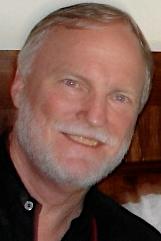Hitesh S. Mehta, the president of HM Design, is a pioneer in the field of authentic ecotourism and a well sought-after ecotourism landscape architect, environmental planner and architect. Here, Mehta speaks to Mallika Naguran, the founder of Gaia Discovery, of his views on how ecotourism is likely to shape Asia in the years to come and about his next book - the second volume of Authentic Ecolodges.
Michael Behm: Worker Health & Safety Needed in Green Buildings
Sanyo Solar Power Visionary Dr. Hiroyuki Kuriyama: How the HIT Solar Cell was Invented
Huston Eubank on Cutting Emissions, Exploring Biomimicry for Sustainable Buildings
by Jeremy Torr
"I just love this quote: ‘We are surrounded by insurmountable opportunities' - it really describes our current situation well." Huston Eubank, former executive director of the World Green Building Council, and principal of Green Development Services at the Rocky Mountain Institute is realistic about our situation with respect to climate change.

"Measure results" - Eubank
He modestly admits to having "only been on the eco-bandwagon for a mere 18 years or so". But as a fluent and convincing ambassador that we need to look rationally at where we can do most good, most quickly to achieve sustainability, he comes with a persuasive message.
That isn't to drive a hybrid, grow beetroot on your balcony or engage in carbon offsets for your holiday flights. It is to make our buildings more energy efficient.
"When Lee Eng Lok, a wonderful Singaporean architect was called in to help the Grand Hyatt in Singapore save money, he managed to cut energy bills by 45% without a making any changes to the structure of the building. He simply measured accurately what energy was being used and applied sensible practices to cut it. So not only did it cut down significantly on energy waste but it saved lots of money," he says.
"It's not just about doing things to save energy - it's about measuring the results of those savings and seeing what is most effective. Continuously," adds Eubank.
Which is why he advises we stop looking at the emotive, politically-motivated issues that ring all the right green bells but do precious little to save emissions. Instead, he advises, we should look at the figures, the measurements of what produces the most CO2 emissions and address those issues first - and factor in the cost of addressing those issues.
"Everybody is busy looking at the viability of producing biofuels, but that will hardly dent overall CO2 output at all, and will cost millions," he says. "But if we look at the basic figures, we can see that buildings contribute around 40% of all carbon emissions today - so if we cut those by just a tiny bit, we could make huge carbon savings."
According to Eubank, the bonus is that addressing building energy consumption is unlikely to cost us anything - in most cases (as with the Grand Hyatt) it will save money into the bargain and so be highly cost-effective, as well as carbon-effective. He cites an early formula devised by Ehrlich and Holdren in 1971 but often applied to new developments. This states that Environmental Impact = People x Affluence x Technology. "And this, allied with well-established construction phrase that says if brute force isn't working simply use more brute force, has shaped the way we make and use buildings for the last 250 years," he adds.
Describing the impact of buildings on the climate as ‘massive', he points out that it's a situation we have, literally, created ourselves. So we have to create the solution ourselves as well. "We should now not just be looking at reducing energy consumption in buildings and cities, but more than that, actually achieving sustainability," he says.
And in his opinion, this extends to the whole system, not just the individual building components. "Looked at in this way, New York is one of the most energy efficient cities around," he says. Because the place is so compact and people live close together in big buildings, it's easy for them to walk everywhere. This mean car usage - and hence carbon output - is dramatically less than most other major cities on a per person basis. And if people walk, they don't need so many roads, can grow more grass and trees, and save on cooling costs associated with all those heat-sink black tarmac roads. All of which contributes to fewer carbon emissions.
"Being green then can mean much more than just being sustainable," he adds. "In the ideal situation, it should be restorative." To do this simply takes a simple re-arrangement of the Ehrlich and Holdren formula. "Instead we should be saying Impact = People x Affluence/Technology," asserts Eubank.
"Moving technology to the denominator is a massive change that makes technology part of the solution as opposed to part of the problem. This describes the shift we are beginning to see from industrial revolution technology to sustainable technology," he explains.
"What we really need to do is move towards biomimicry, where we try to imitate natural structures and processes for maximum efficiency. At the moment we waste about 90% of the energy we consume, but we already have the knowledge to cut that significantly. All we need to do is change our approach to make it happen," he says.
Huston Eubank was speaking at the Futuropolis 2058 Conference in Singapore on Creating Sustainable Urban Environments through Innovation. Contact Huston Eubank at huston@rmi.org.
How to cut Building Energy waste:
Use natural wind cooling, not airconditiong
Use heat reflective glass to keep temperatures stable
Turn thermostats up/down to nearer to norm air temperature
Use natural lighting where possible
Make sure walls are insulated
Make sure doors and windows seal effectively
Use low power light globes
Check fridge seals or buy a new Energy Star fridge
Next up on Gaia Discovery exclusive - interview with Storm Cunningham, author of ReWealth and The Restoration Economy.





